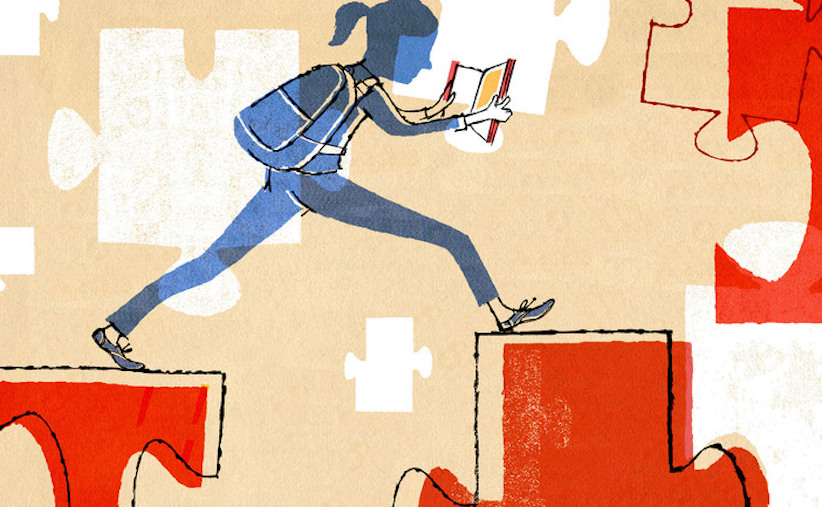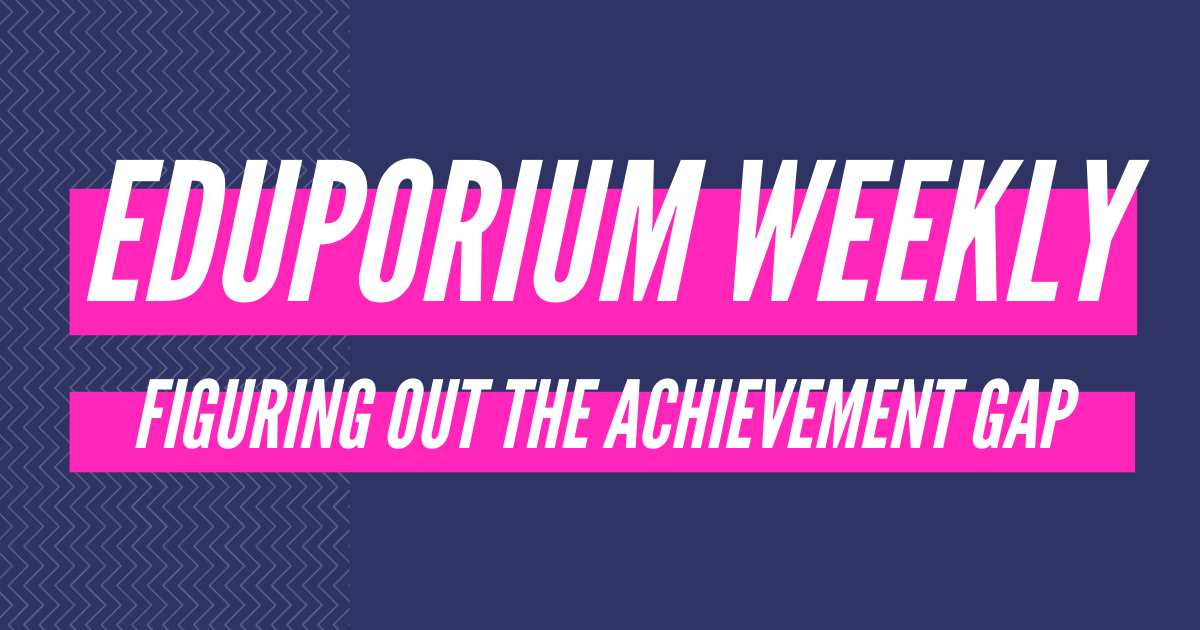The lingering achievement gaps in education is a pretty broad topic. Knowing that it’s also a very important one, we try to focus on some of the more relevant aspects that people in education should know. When we discuss these various achievement gaps, we’re referring to measurable disparities in achievement among students within different but inherent groups. These could encompass a disparity in grades, attendance, or maybe even in soft and social-emotional skills development. Unfortunately, education experiences aren't always equitable, which contributes to persisting gaps among students of different backgrounds. Knowing that this means academic success isn't always distributed equally, how can we help fix it?
The Different Pieces of Achievement Gaps
We have a general understanding of the achievement gap as a whole but there are so many smaller factors that go into fully understanding various details. First, we could argue that, beyond the general achievement gap, there are dozens of smaller achievement gaps that affect far fewer students but do so in more specific ways. So, to consider any specific educational event or outcome a gap, it must persist over some period of time and exacerbate trends that persist among different student groups. When we refer to the achievement gaps in the education world, more often than not, we also—implicitly or explicitly—consider students' race, socioeconomic background, or their geographical locations. These factors are actually all related and, a lot of times, contribute to achievement gaps among certain groups of students.
Racial disparities in student achievement.
The achievement gap we probably discuss the most is that among students of different races. Specifically, the disparity in achievement among Black and white students is often detectable, including in performance on standardized tests, lower graduation rates, lower college enrollment rates, and lower college completion rates. Other events might come into play as well, such as dropout rates, absence rates, or even disciplinary issues. Unfortunately, there's not always set data to help researchers pinpoint these origins of achievement gaps and, more importantly, to try ending them. These causes are often complex and overlapping, coming back to factors beyond anyone's control much of the time. At the top of that list, however, is often income inequality. This poverty tends to lead to a lack of educational access for affected students, weaker family support, and other disadvantages.
Factors that might cause achievement gaps.
Achievement gaps usually tend to affect minority students, particularly those who have Black and Hispanic backgrounds. This includes harmful and erroneous presumptions that leaders in certain schools have lower expectations for students, ultimately leading to lower achievement. Gaps in achievement, however, are also born from lower-quality schools, large class sizes, a constant lack of funding, a lack of up-to-date teaching resources, and more. It’s also possible that having parents who didn't attend college or thrive academically could contribute to persisting achievement gaps. And, those aren't even all the possible reasons. Basically, we’re getting at the fact that, for one of many potential reasons, students with certain backgrounds tend to find themselves as the subject of the achievement gap discussion—and it’s incredibly difficult to close it.

Attempting to Tighten Achievement Gaps
So, we know that achievement gaps exist and they’re more prominent for children of certain backgrounds. The data show that much. Knowing about these problems and doing something real about them, however, are two different things. While achievement gaps are narrowing overall, they’re certainly still present and it will certainly take more time for them to keep shrinking and disappear altogether. Eliminating achievement gaps cannot happen overnight and it will likely take some substantial action by education officials or even political officials at both the state and local levels to drive steady change over time. Teachers themselves, especially in areas with more prominent gaps, certainly know of the issues. And, some are doing the little things to get closer to a solution while others feel helpless without the proper resources.
Addressing the achievement gap outside the classroom.
One option is creating and offering enrichment programs so students can learn key skills and catch up so to speak. These sometimes include STEAM programs so that kids have a shot at learning important skills even if it's after school. The challenge, then, would be to find faculty members who have some time to lead these initiatives. Despite us typically measuring student achievement with test scores, there is way more to those scores than just student knowledge. Learning how to solve problems, work well with others, build up resilience, and other factors could also contribute to their scores and, ultimately, to how these achievement gaps shake out. And, many times, working to narrow the achievement gap requires supporting students on a personal level—not ensuring one-size-fits-all instruction.
Emotional support and increasing equity.
Student achievement also goes back to both the soft and hard skills they build. Yes, if students have social and emotional support, they could learn about building resilience, communicating their apprehensions, and so on. And, this can help the educators learn how to best support them on their way to higher achievement and shrinking gaps. It can even start with identifying the students who might be the most at risk. Of course, we don’t ever want to profile anyone, especially children, but the data show that their race, socioeconomic status, and geographical location play a role in sustained achievement gaps. Identifying students who'll fit into these areas and providing extra academic and emotional support is something educators could do to help make an impact—no matter how small it might seem on the surface.
Assessing How Achievement Gaps Form
This concept of achievement gaps has existed for decades and it was born as members of the education community began noticing disparities with how different groups of children were performing academically. Hints at these gaps exist in grades, standardized test scores, dropout rates, college completion rates, and course selection processes. Over time, many people thought that achievement gaps existed largely among students of different races but, in the last decade or two, there's been more focus on gaps among students in families that have different income levels. In fact, in 2012, there was a huge piece in the New York Times on how the achievement gaps between Black and white students tightened since the 1960s while that gap between low- and high-income families grew by 40 percent.
Beginning efforts in the early years.
The early childhood period for students is crucial as it pertains to the forming of achievement gaps. Gaps with academic performance can appear as early as kindergarten due to rapid brain development preceding the start of school. These include both academic and social skills and it’s largely the experiences kids have in these first three years that shape their development, including how their caregivers treat them. Research shows that when a young child tries to communicate with articulated words, sounds, motions, or cries and an adult responds in an engaging manner (like with eye contact), this can strengthen both the child's social and communication skills. If the caregivers fail to respond in these situations, development can stall, which can create gaps in the early years.
How to prevent an achievement gap from developing.
The key is providing equitable attention to children in these early years—namely by interacting with them. The more parents talk with children, the quicker they'll develop and there will be less need to worry about things like the 30 million word gap. These gaps might also often relate to socioeconomic status in families and variance in children's lives. Talking with young children could help build their brain’s processing speed, their abilities to transition into kindergarten, their verbal skills, their brain's structure and function, or more. Basically, there's a connection between early exposure to language and communication and achievement throughout their childhood. It seems simple but the ways parents interact with kids could widen or tighten various achievement gaps over time.

Assessments, the Summer, and Class Sizes
As we have said, achievement gaps in education involve different things and one of those is reading ability. Educators have made progress in shrinking this gap over time but, though it is smaller, it has not continued to narrow. Since people talk about the achievement gap in so many different ways (like we have throughout the post), teachers, parents, and other officials must remember to specify which aspect of the achievement gap they are referring to. The emergence of achievement gaps also comes into play at different times for all different children. In extreme cases, it begins before they start school—around age three or four. For others in different places or in different situations, however, it's a bit later—anywhere between 5-7 years old.
Stopping achievement gaps from stretching during the summer.
Research also indicates the achievement gaps often tend to not increase during a school year. They don’t usually decrease either, but the fact that it levels off while students are in school is important. The summer months are more concerning among Black and white students with Black students impacted more by this now-widening gap. And, while there’s not tons of research yet, there could be a whole new gap eventually: the pandemic achievement gap. Anyways, these gaps continue to persist and some educators argue that eliminating standard multiple-choice assessments would help shrink it. They feel that replacing tests with assessments will highlight problem-solving abilities and creativity instead of ability to memorize content.
Designing learning opportunities for every child.
There’s another side to that argument, however, and it's that Black children do not perform better on these assessments. Why is that? One argument is that they don’t receive attention that would help them develop the skills for that kind of environment. This comes back to existing disparities in opportunities to learn more relevant skills among Black and white students. It’s obviously tough to design methods for eliminating the achievement gaps, but most potential suggestions haven't really helped. We’ll talk more about them below, but reducing class sizes for children who are most susceptible is one idea. It’s, of course, very tough to do, however. Small class size means needing more teachers and that means school leaders might hire anyone, which we see happening anyway. So, although shrinking gaps is the intent, it’s a lot easier said than done.
Attempted Fixes to Achievement Gaps
Obviously, educators are aware of the various achievement gaps that traditionally impact certain groups of students. The problem isn't with identifying that these gaps exist, but rather creating solutions that actually address them. Education leaders and appointed officials have tried a bunch of different approaches to help reduce achievement gaps and, though they have made some progress, the numbers still reflect a gap. But, what have they tried? According to this article on the Penn Graduate School of Education’s website, four main categories of reform could help. Despite coordinated attempts at preschool reforms, teacher reforms, instructional reforms, and standards-based reforms for decades, however, nothing substantial has resulted.
Why preschool reform could be a solution.
As for preschool, the findings indicate that early gains in achievement aren't usually sustained despite the programs impacting student achievement. Basically, this depends on the quality of the preschool program. Also, white students are more likely to participate in preschool, and those preschools are more likely to be higher quality. There could be a geographical reason to this as well. Next, is teacher reforms. According to this report, we can also now document a teacher's effectiveness much more clearly. And, having effective teachers every year helps boost achievement more than having effective teachers once every two or three years. It also shows that, if teachers indicate they expect more from their students, they may achieve more. Again, providing effective educators in all neighborhoods is nearly impossible and, for what it’s worth, there is also evidence that Black students achieve more when they have Black teachers.
Teacher reform, predictions, and the achievement gap.
As for instructional reforms, one approach is ensuring every student attains success—not excellence. This is an attempt to raise the bottom level of student achievement. Reduced class sizes have also shown to be successful but mostly during the first year. Some of their success remains in the following years, according to the report, but there’s no evidence of long-term sustainability. Also, the logistics are often challenging for education leaders. Finally, we have standards-based reforms. There's now much more focus on connecting research to practice but few real improvements have resulted yet. And, to sum things up, it’s a lot easier for teachers to discern that there is a gap in achievement among different types of students than it is for them to do something significant about it.
For the latest EdTech, STEM, and 21st century education news, follow us on Twitter and Instagram. Like us on Facebook, too, or sign up for our newsletter for our latest product announcements and offerings. If you have an idea for an Eduporium Weekly theme, send us a message on social media or comment below.



